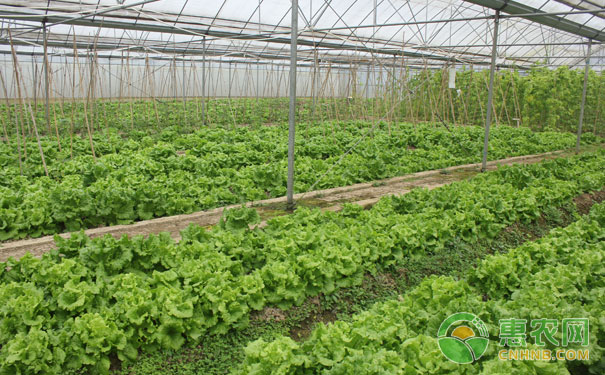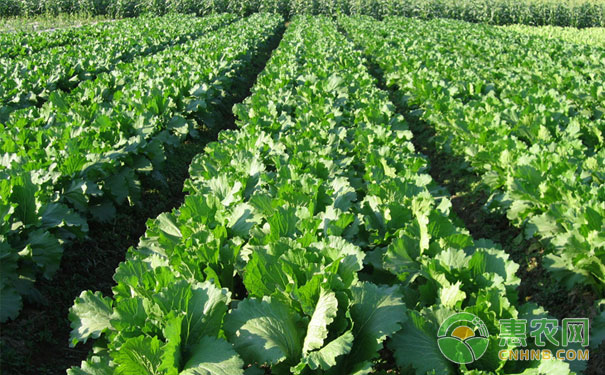As the saying goes: "A cold autumn rains, cotton wears in ten autumn rains." The white dew rains are gradually decreasing. After that, the sunny days are full of light, the climate is relatively mild, and the temperature difference between day and night is large, which is very suitable for the growth of various vegetable crops. Farmers should seize the favorable opportunity, not only to plant good autumn and winter, autumn and winter facilities, but also to do vegetable seedlings, especially the wintering and protection of vegetable seedlings. 1. Autumn broadcast cabbage to pay attention to pests and diseases The autumn-sown cabbage is in the rosette period. The early-selling cabbage has already reached the center of the package. The cabbage must be cultivated and soil-removed. After the end of the seedling, watering and topdressing can be started. Topdressing method, 20 kg of NPK compound fertilizer or 300 kg of bio-organic fertilizer per mu per mu. The topdressing method can be followed by water topdressing, and 8-10 kg of NPK liquid fertilizer per mu is applied; the cabbage is mainly used for watering and topdressing, promoting the heart and growth. The interval of watering time should be adjusted according to soil quality, weather conditions and plant growth. Note that the amount of watering should not be too much. It is recommended that small water be poured. The vegetable rosette period is a period in which pests and diseases occur frequently, and it is important to prevent diseases such as viral diseases, downy mildew, black rot, and pests such as aphids and green worms. Strengthen the field inspection of the disease and find that the central disease plant is timely prevented. Most of the insect pests are beetle moths, so spraying during the day often does not work, and should be applied at night or in the morning when the dew is not dry. In recent years, some dry heart-burning diseases have occurred in some plots. It is necessary to control the amount of nitrogen fertilizers and increase the application of phosphorus and potassium fertilizers at the same time to achieve reasonable watering. Remember that there should be no water shortage during the rosette period to the beginning of the ball. 2. Radish and carrot focus on water management All kinds of radish have been transferred from the leaf growth period to the broken belly period and the fleshy root growth period. The water management in these two stages is quite different. The watering should be controlled in the leaf growth period. If the water is poured too early, the leaves will be promoted. Affect the growth of rhizomes. The broken belly period indicates that the radish has been transferred to the rhizome growth period. At this time, the water should be watered at the right time, and the soil should be kept moist, so that the radish rhizome can grow better. If the base fertilizer is applied adequately, it is not necessary to topdress the fertilizer; Timely prevention and control of pests such as aphids and cabbage caterpillars can be done. When the carrot is still in the growth stage of the leaves, it is necessary to properly control the watering. If there is no rain or soil drought for many days, the plant grows slowly and so on. It can be poured with a small amount of water, mainly for cultivating weeding and controlling mites. 3. Autumn and winter 茬 greenhouse crops ensure the quality of planting Warm greenhouses such as tomatoes, eggplants and sweet peppers can still be planted in solar greenhouses with good heat preservation. It is necessary to deduct the shed film in advance, disinfect the shed and the soil, apply the organic fertilizer as the base fertilizer, and apply more than 5,000 kg of fully-fertilized and fine-grained high-quality organic fertilizer per acre; apply fertilizer and fine soil preparation 10-15 days in advance. To achieve ploughing, leveling, and no dark and dark; to make a ridge or stilt that is 15 to 20 cm above the ground, a shed with no drip irrigation facilities is suitable for ridges and ridges, and a V-shaped watering ditch should be dug in the center. It is convenient to take the under-film dark watering in winter. To ensure the quality of planting, choose the seedlings with uniform growth and uniform size, and the requirements are suitable for the depth and density. The average tomato is about 3000 plants per mu, and the cherry tomatoes are 2200 plants per acre. . When the temperature is high, you should choose to plant in the sunny afternoon, and fill the water in time. 3 to 5 days after the planting of the sand loam chamber is to promote the slow seedling, it is also necessary to pour a slow seedling water and timely cultivate the loose soil. 4. Overwintering 茬 warm crops to catch seedlings Tomatoes, peppers, eggplants and other crops that have been warmed up in the solar greenhouse for wintering are seeded in mid-September. The greenhouse cucumber and zucchini with medium heat preservation performance are nursed in early September; the greenhouse cucumber and zucchini with good heat preservation performance are seeded in late September. Excellent varieties with good cold resistance, low temperature and low light resistance, and continuous fruit setting under low temperature and low light conditions should be selected. Cucumber can be selected as "Zhongnong 26"; eggplant can be selected as "early cooked Jingjiao No. 6"; the western gourd can be selected with "Gyeonggi 12" or "Gyeonggi 36" and other excellent qualities. Take 50-hole or 72-hole plastic tray seedlings, prepare the substrate with peat, vermiculite and perlite, or purchase a prepared special matrix. Do a good job in seed treatment and prevention of tomato yellow leaf curl virus disease. Cucumber adopts the method of grafting and seedling raising. It is best to use the de-wax powder and the good-quality “Bei Nongliang anvil†brown seed pumpkin as the grafting rootstock. 5. Open field fast-growing leafy vegetables are planted one after another Can be planted rapeseed, spinach, sage, coriander, oil wheat, fennel and cherry radish, small water radish and other fast-growing vegetable crops, harvested in the late September to early October to meet the market demand before and after the National Day. After a uniform fine soil preparation sowing, soil depth suitable to ensure the emergence soil moisture needed. 6. Open field beans and cowpeas harvested in time Fall planting pole beans, cowpea positive peak harvest to harvest time in the best merchandise of fruit, lush plants due to dry weather, a large amount of moisture evaporation, to do the watering, fertilizer management, usually about 7 pouring water once. But also do aphids, pod borer, rust and other pest control work. 7. autumn winter garlic Autumn sowing winter garlic is sown in mid-September, and you should choose a variety of purple garlic with good quality and flavor. Fertilization advance preparation, attention must be administered full maturity finely divided organic fertilizer; sown uniformly and the same depth, casing Bohou appropriate, after sowing should timely watering. Short range distance sensors from JRT combine highly precise measurement results with quick and reliable response. Short distance sensor module use single-transmit and single-receive measurement technology and can be used to measure a distance or monitor the slow moving objects. For the laser pointer distance measure, also called optical range sensor, can measure legth, width, depth. Laser rangefinder transducer with rxtx has been widely used to industries. Laser Distance Sensor Short Range,Short Range Sensors,Oem Laser Distance Sensor,Distance Sensor Laser Chengdu JRT Meter Technology Co., Ltd , https://www.irdistancesensor.com

